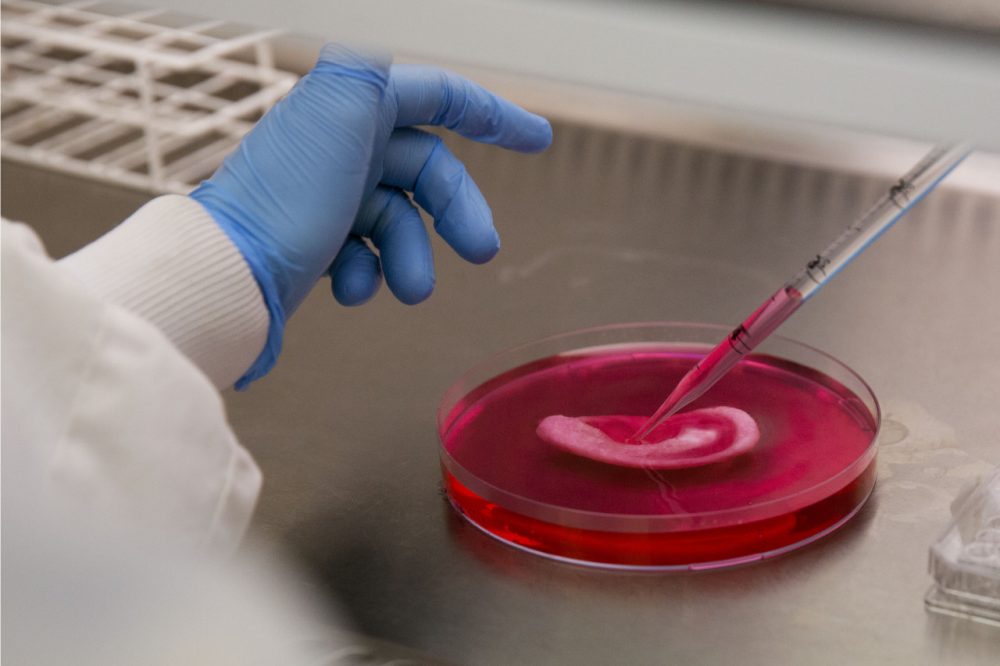Advertisement
Top Male Scientists Rarely Train Female Scientists
Resume
For some time now, it's been known that women are well represented in certain areas of the life sciences, such as genetics, cell biology and biochemistry. In fact, women make up more than half of all biology grad students, and 40 percent of biology post-docs.
But something happens on the way to those coveted university professorships. The number of women in the life sciences plummets dramatically. Only 18 percent of tenured biology professors are female, and that's true right across the other science disciplines as well.
Some clues emerged Tuesday in the pages of the Proceedings of the National Academy of Sciences, which published a study on the gender gap in the nation's research labs.
Guests
Jason Sheltzer, graduate student at MIT and co-author of the new study on the gender gap in science labs.
Nancy Hopkins, molecular biologist and professor emerita at MIT.
Highlights
On gender disparity at the top biology labs:
Jason Sheltzer: "While women are very well-represented across all labs in biology, when we started breaking it down and looking at specific subsets — specifically subsets of labs run by men — we found a very different picture... In labs run by male Nobel laureates, male grad students outnumbered female grad students by about two to one. In labs run by male Nobel laureates, male [postdoctoral fellows] outnumbered female [postdoctoral fellows] by about three to one... Labs run by elite women — women who had won the Nobel prize [and] been elected to the national academy — hired just as many women as was representative of the pool of trainees."
On the reasons behind gender disparity in biology:
JS: "Our research was just a snapshot of biology labs as they exist today. We can't really get to the causality question, but I think that some important factors could be, potentially, self-selection among female grad students towards or away from certain labs. Also, conscious or unconscious bias on the part of some male faculty members."
Why it's important to recognize the dearth of women in the nation's elite labs:
Nancy Hopkins: "These people are training the next generation of science professors and leaders in science in the biological field. So, if they're missing from those labs, they'll be missing from the next generation of faculty and leaders."
On the importance of encouragement in the lab:
NH: "I know first-hand how important it is to come out of the lab of a person like [James Watson]. I started at the top and... Jim Watson encouraged me to be a scientist... I wanted to be a scientist, but as a very young person, it's hard to imagine yourself as a professor at a place like MIT or Harvard. You don't know if you have the ability and very few people do this — certainly in my generation, almost none. But if Jim Watson tells you you've got the right stuff and you should do it and he pushes you to do it, that's going to shape your life... it certainly shaped mine."
On the reasons behind the low female numbers in elite labs:
NH: "It's self-selection by the women and... it's bias by the men. And Jim [Watson] was 35 years old. He was open to all kinds of possibilities. Molecular biology was a young field, he was an unusual person. But there were men whose labs I think I would not have approached because I think I would have known that they would not be receptive. I can't even explain how women know these things, but to some extent they do. But I think... my one case, which took place 50 years ago — really, I heard Jim Watson speak 50 years ago — is very different from what's going on here today, where there are so many women in the biology pipeline. But, as Jason said, they're not getting to the top."
More
The Boston Globe: Study Finds Top Male Scientists Tilt Toward Hiring Men
- "A provocative study released Monday provides a crucial clue to the obstacles women face in reaching the top echelons of science: Academic laboratories run by the nation’s elite male life-sciences researchers more often hire other men for coveted training positions."
This article was originally published on July 01, 2014.
This segment aired on July 1, 2014.